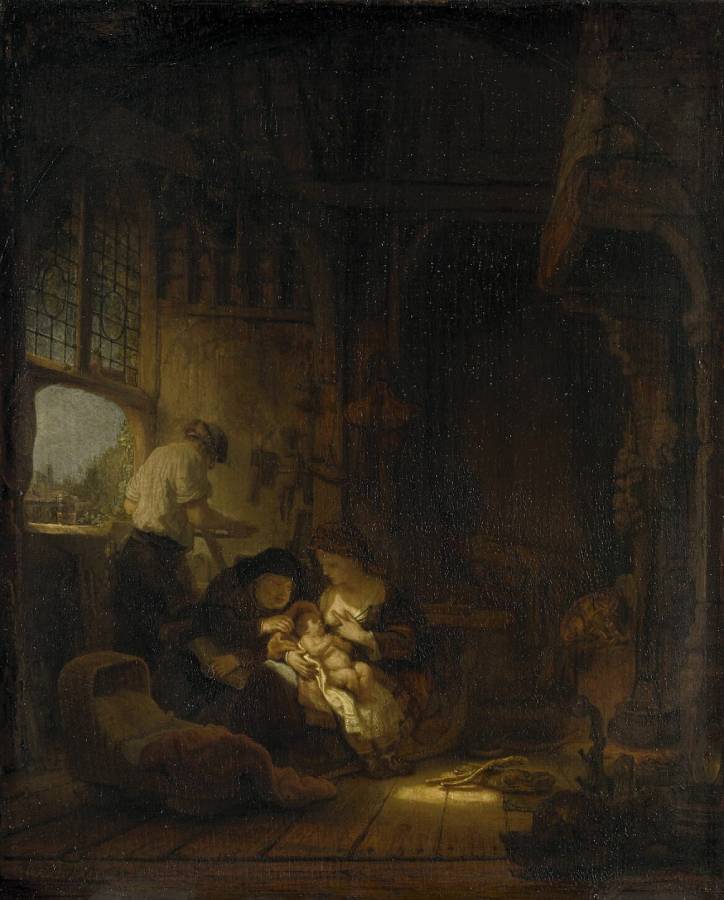Rembrandt (1606-1669)
The Holy Family with St Anne
1640
Oil on panel, 41 x 34 cm
Musée du Louvre, Paris
The Christian meaning of the painting has often been obliterated in favor of a purely secular interpretation: for example at Voyer d’Argenson (see Leclair), at Descamps, in the first catalogs of the Louvre (1793: “Dutch family in an interior” ; 1799: “Carpenter’s household”, a name that has been permanently maintained, cf. Villot), while the religious aspect of the scene is well underlined by the presence of Saint Anne according to the medieval tradition of the Anna Selbdritt, the Bible that she reads, the yoke made by Joseph, a clear biblical allusion (Isaiah, IX, 16) to the yoke weighing on Israel but broken by Christ, or the veil that Anne lifts, a metaphor for the Old Testament revealed and fulfilled by Christ (Tümpel). As for the attribution to Rembrandt, obvious at the level of the idea, it poses a problem in terms of execution which may well be the work of a very gifted student like Bol, working with the master and strongly influenced by him, around 1640. The painting appears to have been originally arched and inserted into a rectangular panel. The enlargement would have been made by Colins for Voyer d’Argenson, therefore between 1749 and 1752. The Corpus Rembrandt (1989) estimates that the change in format occurred between 1769 and 1772, because the painting is still said to be “curved from the top” in the Gaignat sale (1769) and drawn as such by Saint-Aubin, but the painting could also be provided with an arched border and copied by Saint-Aubin in the frame cache. (Louvre)
